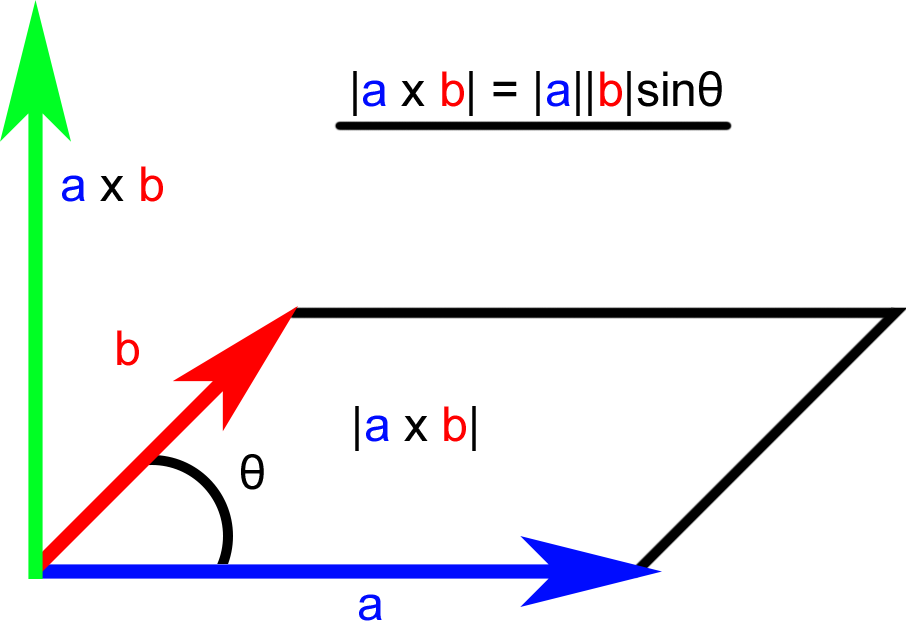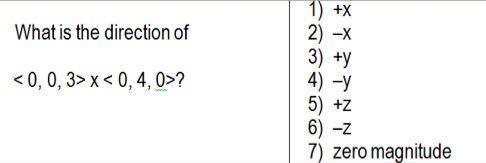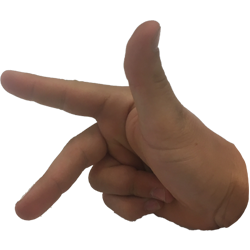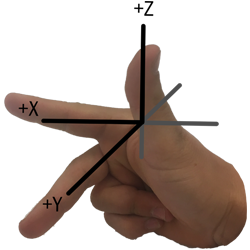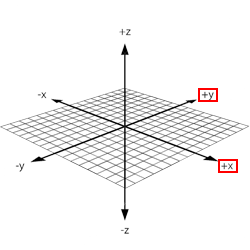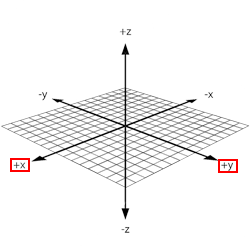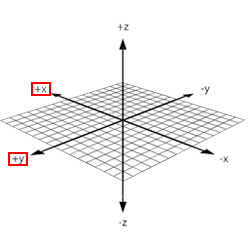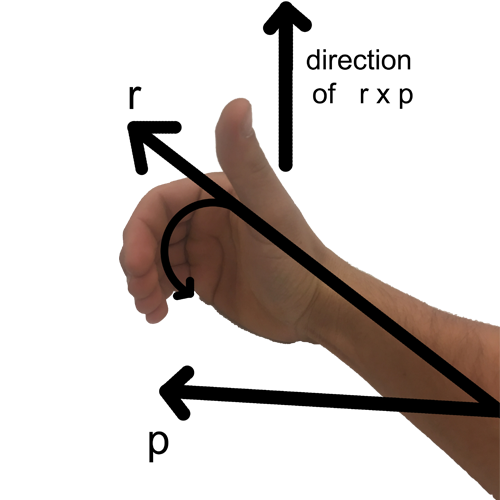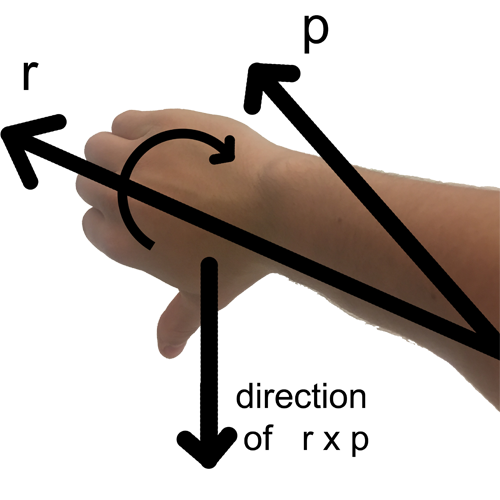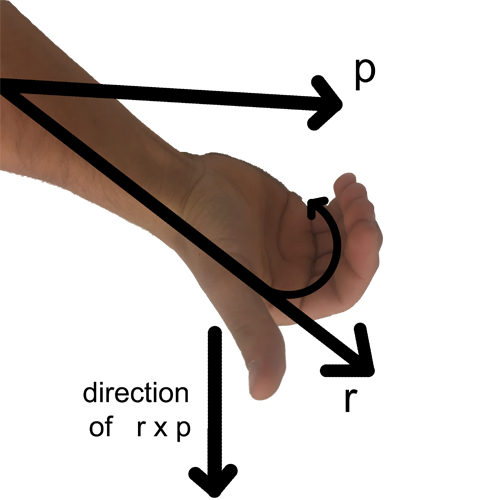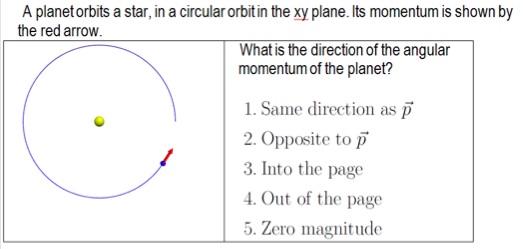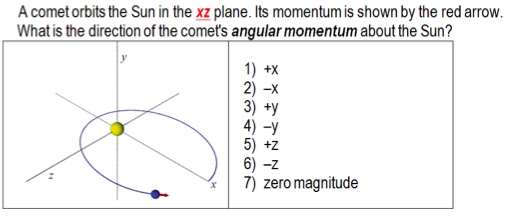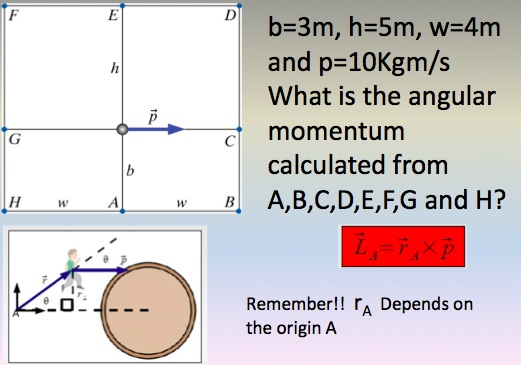Right Hand Rule: Difference between revisions
No edit summary |
No edit summary |
||
| (38 intermediate revisions by 2 users not shown) | |||
| Line 1: | Line 1: | ||
This topic covers Right Hand Rule. | This topic covers Right Hand Rule. | ||
Claimed by: Jake Vollkommer | Claimed by: Jake Vollkommer | ||
<!-- Whoever edits this: please make sure the reader knows that right hand rule refers to cross products in general, not just angular momentum--> | |||
==The Main Idea== | ==The Main Idea== | ||
| Line 6: | Line 7: | ||
* The plane in which both the position vector from the two objects and the momentum vector for the object of interest lie can be indicated by a unit vector perpendicular to that plane. | * The plane in which both the position vector from the two objects and the momentum vector for the object of interest lie can be indicated by a unit vector perpendicular to that plane. | ||
* The direction of motion within the plane (clockwise or counterclockwise) can be indicated by establishing a right hand rule (RHR) for this unit vector. | * The direction of motion within the plane (clockwise or counterclockwise) can be indicated by establishing a right hand rule (RHR) for this unit vector. | ||
===A Mathematical Model=== | ===A Mathematical Model=== | ||
The direction of the angular momentum can also be solved through calculating the cross product of the '''r''' and '''p''' vectors. | The direction of the angular momentum can also be solved through calculating the cross product of the '''r''' and '''p''' vectors. | ||
The cross product of | The cross product looks like this. As shown, the magnitude of the cross product is computed by |a||b|sinθ. We use the right hand rule to determine direction if this method is used. | ||
[[File: | [[File:crossproduct-vis.png]] | ||
[[File: | To calculate the cross product from a matrix, multiply each component by its corresponding determinant. Use this visual representation to help you. | ||
[[File:crossproduct-visual.png]] | |||
For more on the explanation of how to calculate cross product, visit this website: https://www.mathsisfun.com/algebra/vectors-cross-product.html | For more on the explanation of how to calculate cross product, visit this website: https://www.mathsisfun.com/algebra/vectors-cross-product.html | ||
| Line 35: | Line 34: | ||
Now, take your right hand and point your index finger forward (the direction your arm faces), point your thumb up, and point your middle finger perpendicular to your index finger. | Now, take your right hand and point your index finger forward (the direction your arm faces), point your thumb up, and point your middle finger perpendicular to your index finger. | ||
Your thumb is the z-axis and points in the positive z-direction. Your index and middle fingers represent the x-y plane. | Your thumb is the z-axis and points in the positive z-direction. Your index and middle fingers represent the x-y plane. | ||
Your hand should look something like this: | Your hand should look something like this: | ||
[[File:right- | [[File:right-hand250.png]] | ||
Then you can visualize the x-y-z axes over your hand like this: | |||
[[File:right-hand- | [[File:right-hand-directions250.png]] | ||
Realize that you can rotate the x-y plane along the z-axis. | Realize that you can rotate the x-y plane along the z-axis. | ||
For example, if you were to rotate the original x-y plane 90 | For example, if you were to rotate the original x-y plane in 90 degree increments clockwise, you would see this: | ||
[[File: | [[File:xyzog250f.png]] | ||
[[File:xyz1rot250h.png]] | |||
[[File:xyz2rot250h.png]] | |||
Now, as you can see, your right hand indeed represents the entire x-y-z space. | Now, as you can see, your right hand indeed represents the entire x-y-z space. | ||
| Line 61: | Line 59: | ||
Counterclockwise example: | Counterclockwise example: | ||
Notice your thumb points up in the +z direction when the direction from '''r''' to '''p''' is counterclockwise. | |||
[[File:counterclockwise-example500.png]] | [[File:counterclockwise-example500.png]] | ||
If the '''p''' vector is in the other direction relative to '''r''', you would need to turn your hand upside down to curl your fingers towards it. | If the '''p''' vector is in the other direction relative to '''r''', you would need to turn your hand upside down to curl your fingers towards it. | ||
In this case, your thumb points down in the -z direction! | |||
[[File: | [[File:clockwise-ex1.png]] | ||
This situation would also make your thumb point in the -z direction (Notice it is just the first image rotated 180 degrees). | This situation would also make your thumb point in the -z direction (Notice it is just the first image rotated 180 degrees). | ||
[[File: | [[File:clockwise-ex2.png]] | ||
==Examples== | ==Examples== | ||
| Line 98: | Line 95: | ||
==Connectedness== | ==Connectedness== | ||
Right Hand Rule is essential | The Right Hand Rule is a very essential component of solving cross products, such as in angular momentum problems. The concept is usually very tricky to understand, so I wanted to give my best insight on what helped me understand exactly how and why it works. | ||
| Line 118: | Line 114: | ||
== See also == | == See also == | ||
The Right Hand Rule is a crucial part in solving [http://www.physicsbook.gatech.edu/The_Angular_Momentum_Principle Angular Momentum] and [http://www.physicsbook.gatech.edu/Torque Torque] problems. | |||
===External links=== | |||
[https://www.khanacademy.org/test-prep/mcat/physical-processes/magnetism-mcat/a/using-the-right-hand-rule Khan Academy] | |||
[http://mathworld.wolfram.com/Right-HandRule.html Wolfram MathWorld] | |||
==References== | ==References== | ||
All pictures and videos were taken from Professor Flavio Fenton's Physics 2211 lecture notes. | The following pictures were created in Adobe Photoshop using pictures taken by me: | ||
*Cross product visualization | |||
*All Right Hand Rule visualization pictures | |||
All other pictures and videos were taken from Professor Flavio Fenton's Physics 2211 lecture notes. | |||
https://en.wikipedia.org/wiki/Right-hand_rule | https://en.wikipedia.org/wiki/Right-hand_rule | ||
Latest revision as of 17:33, 24 July 2019
This topic covers Right Hand Rule. Claimed by: Jake Vollkommer
The Main Idea
The magnitude of the translational angular momentum doesn't tell us everything about the motion of an object. For example, to describe the motion of Earth's orbit if you are standing on the positive z axis looking toward the origin, the Earth is moving counterclockwise in the xy plane. However, this statement cannot be used mathematically. You can't add "counterclockwise in the xy plane" to "clockwise in the yz plane." Instead, we can use the right hand rule to describe the direction of angular momentum as a vector. The direction can be specified like this:
- The plane in which both the position vector from the two objects and the momentum vector for the object of interest lie can be indicated by a unit vector perpendicular to that plane.
- The direction of motion within the plane (clockwise or counterclockwise) can be indicated by establishing a right hand rule (RHR) for this unit vector.
A Mathematical Model
The direction of the angular momentum can also be solved through calculating the cross product of the r and p vectors. The cross product looks like this. As shown, the magnitude of the cross product is computed by |a||b|sinθ. We use the right hand rule to determine direction if this method is used.
To calculate the cross product from a matrix, multiply each component by its corresponding determinant. Use this visual representation to help you.
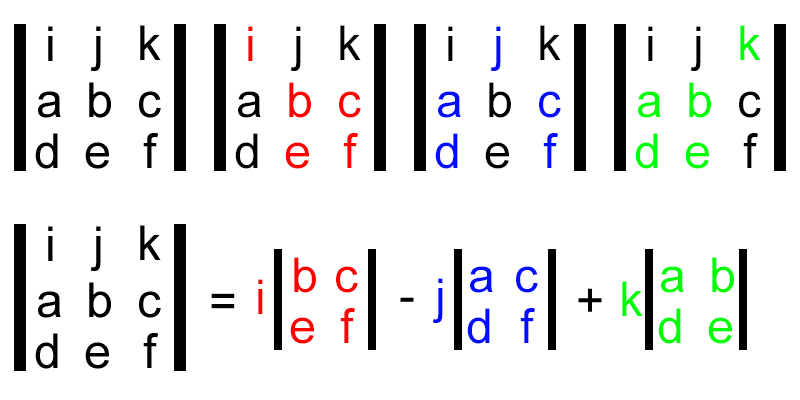
For more on the explanation of how to calculate cross product, visit this website: https://www.mathsisfun.com/algebra/vectors-cross-product.html
Here is an example problem. Solve first using the right hand rule, and then solve mathematically with the cross product.
Answer: The cross product should be <-12, 0, 0> So the vector is in the -x direction, which the right hand rule also tells us.
Visualization
You can use your right hand to visualize the intuition of the Right Hand Rule. Consider the x-y-z space drawn with these axes from the origin:
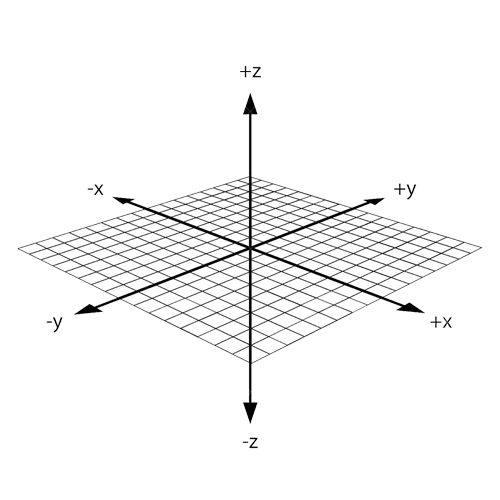
Now, take your right hand and point your index finger forward (the direction your arm faces), point your thumb up, and point your middle finger perpendicular to your index finger. Your thumb is the z-axis and points in the positive z-direction. Your index and middle fingers represent the x-y plane.
Your hand should look something like this:
Then you can visualize the x-y-z axes over your hand like this:
Realize that you can rotate the x-y plane along the z-axis. For example, if you were to rotate the original x-y plane in 90 degree increments clockwise, you would see this:
Now, as you can see, your right hand indeed represents the entire x-y-z space.
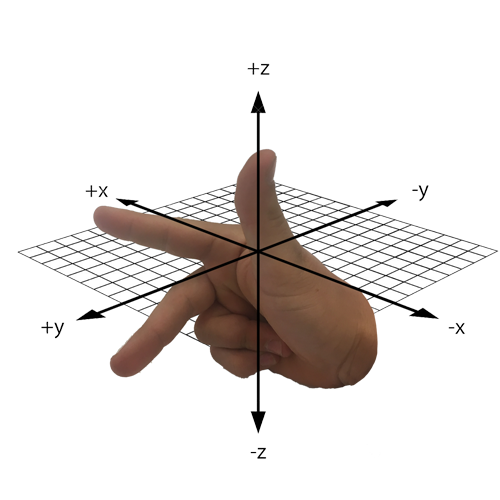
Performing the Right Hand Rule
- Right Hand Rule: Using your right arm, point your arm to represent the r vector. Now turn your palm in the direction of the momentum or p vector. Curl your fingers in that direction of the momentum, and extend your thumb outward. The unit vector representing the direction of the angular momentum is defined to point in the direction of your thumb.
- Hint: If the rotational motion is counterclockwise, your right thumb, therefore the unit vector, will point out of the plane. If the rotational motion is clockwise, the unit vector will point into the plane.
Counterclockwise example: Notice your thumb points up in the +z direction when the direction from r to p is counterclockwise.
If the p vector is in the other direction relative to r, you would need to turn your hand upside down to curl your fingers towards it. In this case, your thumb points down in the -z direction!
This situation would also make your thumb point in the -z direction (Notice it is just the first image rotated 180 degrees).
Examples
Ans: 4
Ans: 3
Ans: 3
Ans: L(A)=L(B)=L(H) = <0, 0, -30> L(G)=L(C) = <0, 0, 0> L(D)=L(E)=L(F) = <0, 0, +50>
Connectedness
The Right Hand Rule is a very essential component of solving cross products, such as in angular momentum problems. The concept is usually very tricky to understand, so I wanted to give my best insight on what helped me understand exactly how and why it works.
Here are some interesting videos about the conservation of angular momentum:
https://www.youtube.com/watch?v=Aw5i994n2bw&feature=youtu.be
https://www.youtube.com/watch?v=OKbawIq3w7U
History
I wasn't able to find who was the first to apply the Right Hand Rule to angular momentum and torque. However, it seems that the right hand rule is applied to other aspects of physics as well. For example, André-Marie Ampère, a French physicist and mathematician, created a right hand rule for circuits and electric currents. This is used when a vector must be defined to represent the rotation of a body, a magnetic field, or a fluid. It reveals a connection between the current and the magnetic field lines in the magnetic field that the current created. This right hand rule works exactly the same way as the one I have described above.
See also
The Right Hand Rule is a crucial part in solving Angular Momentum and Torque problems.
External links
References
The following pictures were created in Adobe Photoshop using pictures taken by me:
- Cross product visualization
- All Right Hand Rule visualization pictures
All other pictures and videos were taken from Professor Flavio Fenton's Physics 2211 lecture notes. https://en.wikipedia.org/wiki/Right-hand_rule
